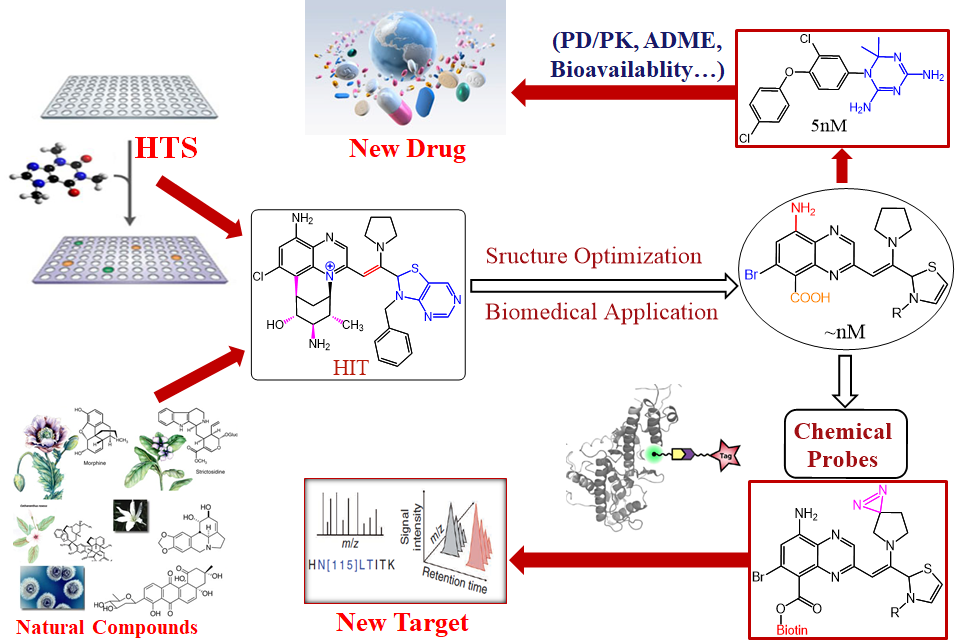The use of small molecules to probe systematic and disease-associated biological phenomena is an important aspect of our pursuits for exciting discoveries of biomaterials, chemical biology as well as pharmaceutical agents to solve serious health problems in living systems. Motivated by the urgent and valuable applications of small molecules in therapeutics and biomedical research, we are devoted to synthesizing small molecules in novel ways and examining their biological properties among a wide variety of biological areas conducted at NIBS. The outcomes of this biological evaluation and the performance in biological screening are the main guidance for further synthesis design. After a range of chemicals is screened against a particular drug target or disease model, and the qualified “hits” chemicals are concentrated and analyzed. Hit to lead development will be conducted to extend out the chemical library through “activity-oriented synthesis”. Lead optimization will be enforced with subtle and profound modifications to satisfy a variety of pharmaceutical rules before they become clinical candidates, including but not limited to solubility, oral bioavailability, cell membrane permeability and many other known druggability features. In close collaboration with several biology labs at NIBS, we have developed one small molecule that regulates circadian clock for 12 hours and identified the molecular target. We also discovered two novel types of molecular glue, one is promoting CDK12-DDB1 interaction to trigger Cyclin K degradation, another one inducing the phosphodiesterase 3A-schlafen 12 interaction to trigger the cancer cell apoptosis. We also identified the molecular target of an indole alkaloid, Nauclefine, and elucidated its mechanism of action in phosphodiesterase 3A-schlafen 12 dependent apoptosis. A highly potent and unique dimeric bile acid type of NTCP inhibitor for HBV infection and four novel kinase inhibitors towards BTK, LCK, IKKε and PDK2 have been developed.

